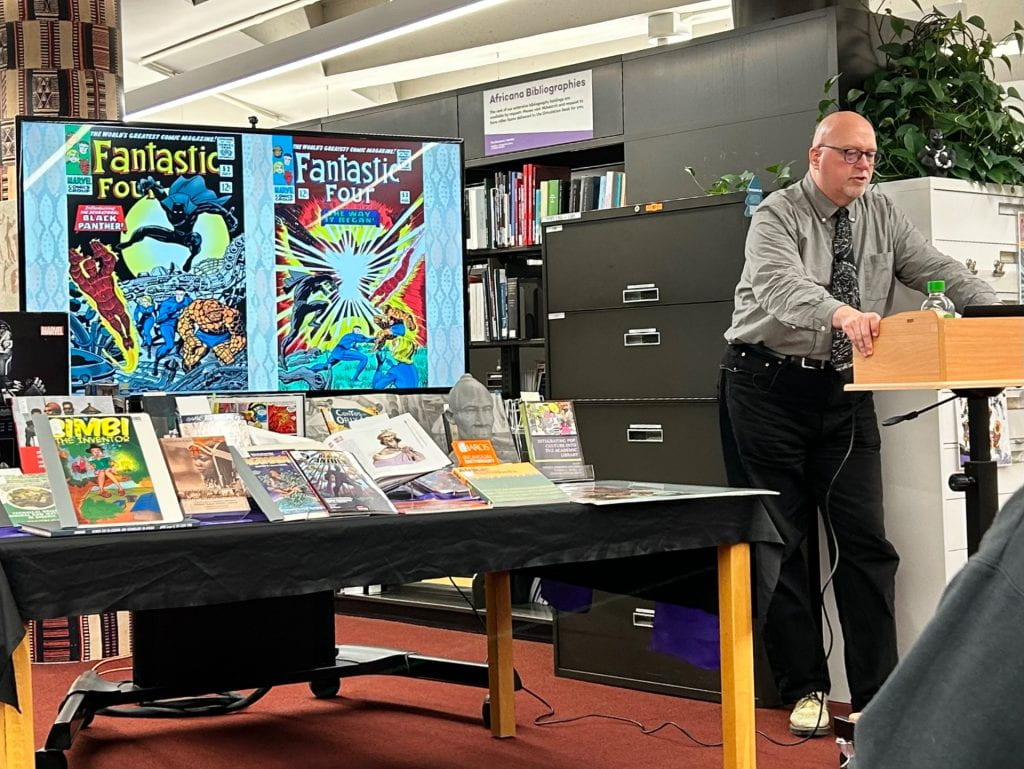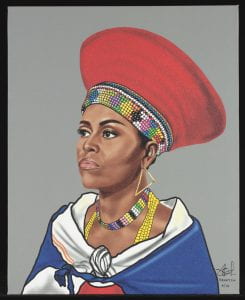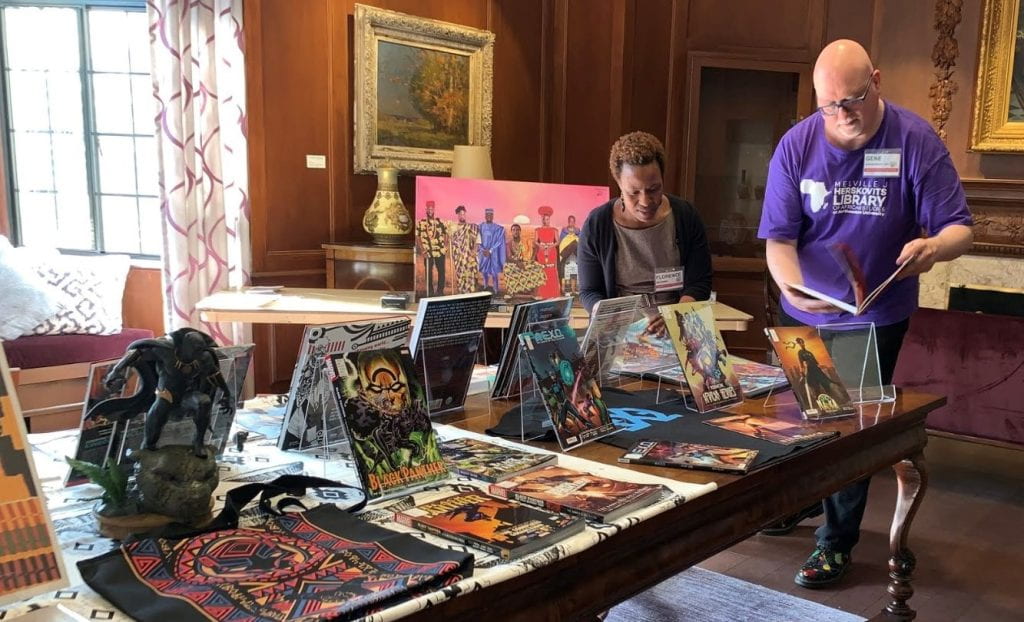The road to real research can begin in the most popcorny corners of pop culture — even a blockbuster comic-book movie, said Gene Kannenberg, Jr., research assistant for the Melville J. Herskovits Library of African Studies in a Nov. 8 lecture.
In “Wakanda as a Window to the Study of Africa,” a talk co-sponsored by the Program of African Studies, Kannenberg examined the ways that the 2018 Marvel movie Black Panther, along with the comics that inspired it, link back to real world materials held at the Herskovits, widely known as one of the most comprehensive collections of Africana in the world. Depictions of Africa in the superhero movie speak to — if are not directly informed by — materials within the collection, he said, providing a unique method of inspiring research and new lines of inquiry.
Black Panther, the heroic protector of the fictional African country of Wakanda, debuted in comic book form in 1966. The representations of Africa depicted in both comic and film iterations involve many choices about language, fashion, graphic design, and historical reference that can be explored in a single visit to the library on the fifth floor of University Library.

Gene Kannenberg, Jr., links pop culture to real-world materials in the Herskovits Library.
“Pop culture is culture,” Kannenberg said, before a display of books, artworks and commercial ephemera in the Herskovits that all conveyed direct parallels to the film.
For example, native Wakandans can be heard speaking to one another in IsiXhosa, one of the official languages of South Africa; elsewhere, written language on screen is depicted using a creative interpretation of Nsibidi, a language of ancient Nigeria. In both cases, the Herskovits collects materials about these languages, including beginner dictionaries for young learners of IsiXhosa and other reference materials.

“Zulu FLOTUS” by Denny Ow
One memorable aspect of the film is its bold and arresting costuming, which blends and reimagines a variety of traditional modes of African fashion. The Herskovits collections are replete with scholarly examinations of fashion history, Kannenberg said, including several prints of paintings by Dennis Owusu-Ansah. The Ghanaian painter, known as Denny Ow, specializes in recontextualizing influential Black Westerners by depicting them in traditional African dress, such as 2018’s Zulu FLOTUS, imagining Michelle Obama in beaded jewelry, Zulu basket hat and wrap.
One of the signature elements of Black Panther in both comics and film is the conception of Wakanda as a technologically advanced African nation devoid of Western influence — a common aspect of the Afrofuturist genre of science fiction. Afrofuturism (and the similar but distinct Africanfuturism) is well represented in Herskovits holdings, from fiction by prolific authors such as Nnedi Okorafor, to graphic novels by journalist Ta-Nehisi Coates. Comics are one of Kannenberg’s research specialties, and he has helped to ensure the collection includes an international array of speculative fiction and graphic art.
Beyond these pop cultural signifiers, Kannenberg said, the Herskovits collection also mirrors the grandest themes of the movie, including African self-governance (reflected in the many historic books and artifacts from Ethiopia, one of the few African nations that was not colonized) to valuable natural resources (citing materials about tantalite, an ore critical to cell phones that is mined in Africa and a direct analogy to Wakanda’s fictional resource, vibranium).

Kannenberg and African Studies librarian Florence Mugambi set out a Black Panther-themed display for the 2018 Black Graduate Student Association Conference in Scott Hall.
Even movie-related memorabilia in the Herskovits, such as a Black Panther maquette and a Lego sculpture, provide the Herskovits useful methods of outreach, Kannenberg said. The sight of such unexpected whimsy among scholarly tomes gives library staff a way to catch attention, prompt probing questions, and lead potential researchers deeper into library holdings.
Kannenberg’s lecture was drawn from his essay that appeared in the recently published anthology Integrating Pop Culture into the American Library (Rowman & Littlefield, 2022). His talk can be viewed on the Libraries’ YouTube account.
